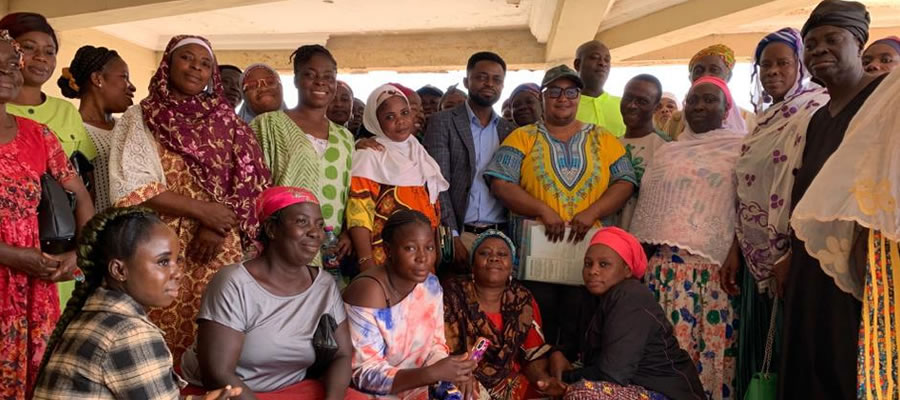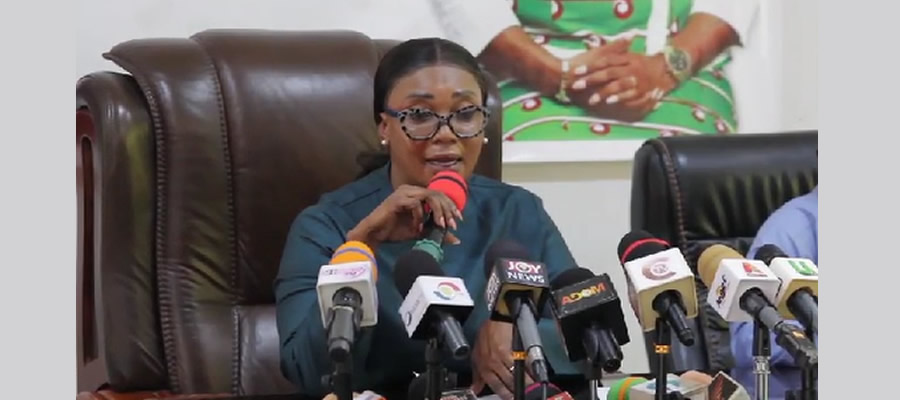

Education
Under education, the distribution of schools, enrolment levels, teachers’ availability, school performance (BECE) in the district as well as the summary of educational issues in the district are discussed.
Distribution of Schools (2016/2017)
The District has a total of 123 Public Pre-Schools (KG), 121 Public Primary Schools and 88 Public Junior High School (JHS) in 10 Circuits. There are also 26 Pre-schools (KG), 26 Primary Schools and 17 JHS private schools. All the circuits have schools ranging from 6 to 18 schools. In the last four years, pupils used to walk an average of 5km to and from school daily. This has reduced to an average of 3km due to the concerted efforts by community members through Community Initiated Projects (CIP), NGOs and the District Assembly towards the provision of school infrastructure in various communities.
Out of a total of 401 basic schools (pre-school, primary and JHS) in the District, 332 are Public and 69 are Private representing 82.8 percent and 17.2 percent respectively. In the Senior High School (SHS) division, there are four (4) of which three (3) public and one (1) private. In the Vocational/Technical category, there is only one (1) public school in this category. From the survey, it was realized that private participation in the educational sector is increasing gradually considering the 17 percent in 2014 and 71.2 percent participation in 2017. There is therefore the need to intensify programmes that will promote private participation in service delivery in the education sector. The details of schools in the various levels under the various circuits in the district is presented in Table
Enrolment levels
Pre-School (KG 1& KG 2) Enrolment Level (2016/2017)
Total Pre - school enrolment stood at 10682 out of which 5359 were boys whiles 5324 were girls which translates into 50.17: 49.84 ratio. This is an indication that more boys are enrolled in pre-schools than girls. Table 1.23 shows details of pre-school enrolment in the district.
Primary School Enrolment Level (2016/2017)
At the primary school level, total enrolment stood at 24,308 out of which, 12,525 (51.53 percent) were males whiles 11,783 (48.7 percent) were females as shown in Table 1.24. This shows that, the enrolment of girls fall short of that of the boys and indicates the need to intensify girl child education in the District.
Junior High School Enrolment Level (2016/2017)
At the JHS level, total enrolment stood at 8,707 out of which 4,714 representing 54.14 percent were males whiles the remaining 3993 representing 45.86 percent were females as indicated in table 1.25. This indicates that there are more boys than girls in the JHS level.
Senior High School Enrolment Level(2012/2013)
At the SHS level, total enrolment stood at 2,094out of which 1,224 representing 58.4 percent were males whiles the remaining 872 representing 41.6 percent were females as figured in Table 1.26 This indicates that there are more boys than girls in the SHS level.
Teachers Availability in Schools (2016/2017)
The district has a pre-school pupils/teacher ratio of 30:1. Though the ratio is reasonable, it is higher than the national standard of 25:1. With regards to the primary level, the pupil/teacher ratio is 32:1. This is a little higher than the pre-school level as well as the national standard of 25:1.
The inadequacy of teachers relative to pupil’s enrolment is attributed to the challenges of teacher accommodation in the district and the deprived nature of the district resulting in teachers refusing posting to the district.
Basic Education Certificate Examinations (BECE) Performance in the District
The general performance of BECE candidates has been improving since 2009 academic year as shown in Figure 1.16. The trend of the general BECE performance of the district presented in Figure, indicates an improvement performance starting fro 2014. With the base year been 2013 which the district had 47.54 percent pass rate, there was a fall in performance in 2014 where the district recorded 43.22 percent. With intense monitoring by the district education directorate, the performance increased from 43.22 percent in 2014 to 54 percent in 2015. It further improved to 64.81 percent in 2016. This represents a significant improvement in BECE performance for the past two years as a result of proactive measures implemented by the district educatorate.
Comparing the both genders in the BECE performance, it is interesting to note that the male gender continue to perform better that their female counterpart.
Development Implications
For the four years under consideration, the district had never recorded a 100 percent pass rate. This is an indication that more needs to be done in relation to educational infrastructure development and human capacity building. Focus should therefore be given to the provision of more classrooms blocks, expansion and maintenance of existing ones, government support to the girl child education in the form of teaching and learning materials, capitation, school feeding, among others, should improve and come timely. The district assembly should also extend its support to best performing students to best teachers and schools. This will motive teachers to put up their best.
Trend of School Enrolment Levels and Implication for Development
A trend analysis of the school enrolment figures revealed that as pupils/students climb up the educational ladder to the top, the girls’ dropout tends to be higher than boys as shown in Figure 1.17. The gap is wider from the primary school level to the junior high school. This can be attributed to the lack of the school feeding programme in the JHS and Teenage pregnancy. There is therefore the need to embark on girl child education to encourage more girls into the JHS as well as the SHS level. Also, education on teenage pregnancy and other sex education programmes should be intensified in the District. In addition, Government should extending the school feeding programme to all primary schools and JHS in district and the country at large.
Summary of Findings (Education) in the District (2016/2017)
In summary, during the survey, key development problems identified in the education sub-sector include the following:
• Skewed distribution of schools which decreases geographical accessibility.
• High drop-out rate especially among females at the JHS and SHS levels.
• Poor and inadequate school infrastructure especially teacher accommodation.
• High pupil/teacher ratio especially at the pre-school and primary levels.
• Poor academic performance especially among girls.
Date Created : 11/24/2017 2:39:14 AM













 facebook
facebook
 twitter
twitter
 Youtube
Youtube
 +233 593 831 280
+233 593 831 280 0800 430 430
0800 430 430 GPS: GE-231-4383
GPS: GE-231-4383 info@ghanadistricts.com
info@ghanadistricts.com Box GP1044, Accra, Ghana
Box GP1044, Accra, Ghana